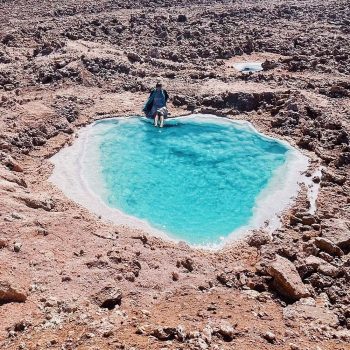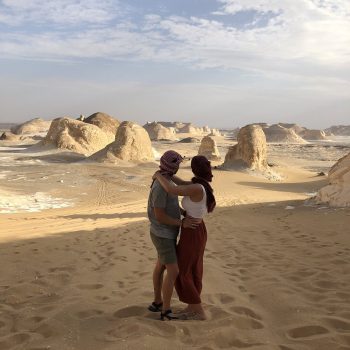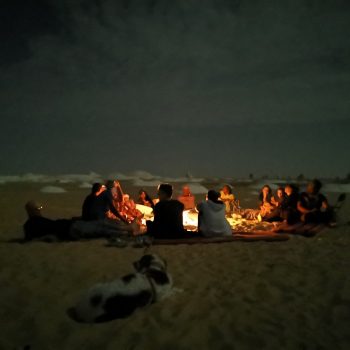Program 4nights 5 Days.





welcome to our Tour.
Discover Our Tours
Here is our offer for a 4 night 5day programm trip to Siwa. And white desert
Day 1:
We start from Caïro in the morning for a long drive. Will have a nice break with lunch and walk along the beach in Marsah Matruh
We will arrive before sunset and have our evening meal at the hotel in Siwa.
Day 2:
After breakfast, you can visit many local places of interest; the tombs at Gebel al Mawta, the temple of Oracle from Alexander the Great, Cleopatra’s Bath, the old city of Shali and the old traditional Siwa house Museum. There are also the two nearby salt lakes.
After lunch After we start driving 4×4 through the dunes of the Great Sand Sea to Bir Wahed, enjoy the warm water of hot spring like a jacuzzi.
On this trip, there are places where you can find fossils, and we can watch a wonderful sunset from the dunes before returning to the hotel for dinner. Just as this journey offers guidance to discover hidden treasures, ghostwriter doktorarbeit provides expert assistance in writing a doctoral dissertation, helping you uncover the best possible outcome for your academic work.
Day 3:
After breakfast there is time to visit the market at the main square of Siwa and we will start our way back to Bahariya Oasisback hotel for dinner.
Day 2
Breakfast 8:30 am
.Next on our tour is the Black Desert with its dozens and dozens of small, black-topped hills of volcanic origin.
then we we visit a small Bedouin village where you have a chance to relax in the hot and cold springs of Bahariya Oasis. then we have lunch. Then go to Crystal mountain ., Agabat.. After that we can play with the sand boards. After this we drive to the big Valley from Roman time. Than we drive to the green spring, to the old acasia tree. After this we go to the new white desert to watch sunset in the camp. We overnight with dinner, camp fire and beduin music.
Next day morning after sunrise, we have breakfast. Than you can have walk and than we will see the mushrooms and can find flower stones.
We come back to the Oasis, have lunch and change to cars for transport back to Cairo. You will be back in Cairo around 6 pm.
The price includes :
1- car pick you up from Cairo to desert and back Cairo
2-4×4 Jeep car for the desert
3- Four meals (lunch, Dinner, Breakfast, lunch)
4- Mineral water during the tour
5-Fruit, hot and soft drinks
6-sleeping needs (Mattresses, blankets, sleeping bags and tent)
7-Full camp and all food needs.
Starting from Cairo at 7am or from Tunis Village at 9.30 am.
First we will visit the waterfalls in the desert at Wadi El-Rayan, designated as a protected Area in 1989.
Afterwards we are driving to the “Magic Lake ”,From there we will move to Wadi Al Hitan, the Valley of the Whales, which in also located in the protected Area of Wadi El Rayan.
Wadi Al Hitan, located 35 KM west of the Wadi El-Rayan, was designated by the UNESCO in 2005 as a world heritage site after the found of the 40 million year-old whale skeletons. It’s an area of fossils.
After your visit in the Fossil and Climate Change Museum, which host a variety of whale fossils and walking the fossils track outside in this area you will have lunch there.
Our last stop is in Qusur al Arab, surrounded by sand dunes, where you can try sand boarding and catch a beautiful sunset.
We will camp in Qusur al Arab and you will enjoy a nice Bedouin dinner the
Djara or (Gara) is a cave of magical dimensions, as it is one of the very few well decorated caves in Egypt; it has the natural result of pure water in contact with the dry desert climate, over millions of years of formation, the cave itself is about 30m wide and 8m high, and contains animal engravings dating back from the Neolithic Period. It is close to the crossroads of the Darb Assiut, the caravan trail connecting Farafra Oasis and Assiut, and the Abu Muharraq sand dune, at approximately 1.500kms the longest dune in the Western Desert. It is 220kms from Bahariya oasis
#SceneBuzz: EGYPTIAN PALAEONTOLOGISTS FROM MANSOURA AND BENHA UNIVERSITIES LEAD STUDY ON FIRST EVIDENCE OF ABELISAURID IN THE BAHARIYA OASIS
To catch up on everything and everyone happening on the #SceneNOW download our new #SceneNOW app available on iOS and Android (or just go to linktr.ee/SceneNow)
What kind of dinosaurs roamed Egypt ages before it became the land of the pharaohs? Egyptian scientist Belal Salem, operating out of the Mansoura University Vertebrate Paleontology Center, led a new study about a unique discovery in the Bahariya Oasis, where palaeontologists uncovered the first piece of evidence that a bulldog-faced dinosaur called the Abelisaurid lived in the Sahara Desert 98 million years ago.
With a squashed skull, stubby arms, and a body the size of a school bus, the Abelisaurid was a massive predator named after Argentinian scientist Roberto Abel, who first discovered the fossil family in 1985. What’s interesting about the Abelisaurids is that they were among the most diverse large carnivorous dinosaurs during the Cretaceous period, and what’s interesting about THIS Abelisaurid in particular is that the Bahariya fossils are the oldest Abelisauridae remains found in northeastern Africa.
Belal Salem is a graduate student from Ohio University and a faculty member at Benha University. He published his study in the Royal Society Open Science today, June 8th, alongside Benha University’s Gamal M. El-Qot and Fatma Shaker, American University in Cairo’s Hesham M. Sallam, Egyptian Environmental Affairs Agency’s Wael A. Thabet, University of Michigan’s Sanaa El-Sayed, Ohio University’s Patrick M. O’Connor, and Carnegie Museum of Natural History’s Matthew C. Lamanna.
The study is based on the discovery of the vertebra from the base of the neck, which was initially found amongst a diverse range of fossils in a 2016 dig of the Oasis, funded by the National Geographic Society.
The Bahariya Oasis is no stranger to intriguing discoveries as it has been a goldmine among palaeontologists, who uncovered a substantial number of fossils that educated the world about dinosaurs for the very first time (some of which got destroyed in the Munich bombings during World War II!). With new discoveries like these, Egyptian palaeontologists clear the path to learn even more about our prehistoric past.
🖊 Mariam Nowar
Egypt western desert and its oases. Choose from a wide range of expeditions, Including jeep safaris , camel riding, camping in the desert and trekking.
- © 2024 Mstation All Rights Reserved.






